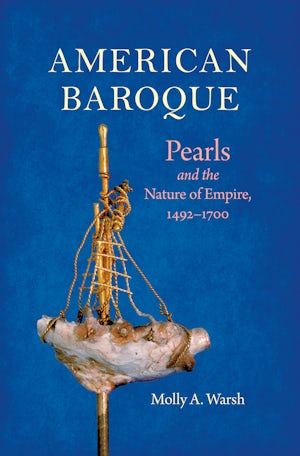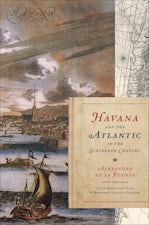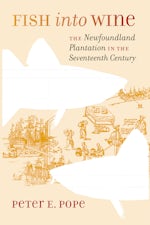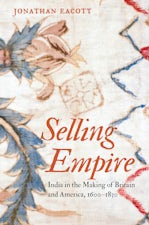American Baroque
Pearls and the Nature of Empire, 1492-1700
By Molly A. Warsh
304 pp., 6.125 x 9.25, 13 color plates., 31 halftones, 6 maps
-
Paperback ISBN: 978-1-4696-6625-9
Published: August 2021 -
Hardcover ISBN: 978-1-4696-3897-3
Published: April 2018 -
E-book PDF ISBN: 979-8-8908-5411-7
Published: March 2018 -
E-book EPUB ISBN: 978-1-4696-3898-0
Published: March 2018
Published by the Omohundro Institute of Early American History and Culture and the University of North Carolina Press
Buy this Book
- Paperback $29.95
- Hardcover $39.95
- E-Book $19.99
For Professors:
Free E-Exam Copies
Published by the Omohundro Institute of Early American History and Culture and the University of North Carolina Press
Pearls—a unique source of wealth because of their renewable, fungible, and portable nature—defied easy categorization. Their value was highly subjective and determined more by the individuals, free and enslaved, who produced, carried, traded, wore, and painted them than by imperial decrees and tax-related assessments. The irregular baroque pearl, often transformed by the imagination of a skilled artisan into a fantastical jewel, embodied this subjective appeal. Warsh blends environmental, social, and cultural history to construct microhistories of peoples’ wide-ranging engagement with this deceptively simple jewel. Pearls facilitated imperial fantasy and personal ambition, adorned the wardrobes of monarchs and financed their wars, and played a crucial part in the survival strategies of diverse people of humble means. These stories, taken together, uncover early modern conceptions of wealth, from the hardscrabble shores of Caribbean islands to the lavish rooms of Mediterranean palaces.
About the Author
Molly A. Warsh is associate professor of history at the University of Pittsburgh
For more information about Molly A. Warsh, visit
the
Author
Page.
Reviews
“Explores how pearls were extracted, circulated, and valued and situates them within wider frameworks of imperial expansion, consumption, and global trade. . . . A carefully researched and beautifully illustrated book.”--American Historical Review
“A richly researched contribution to the literature on commodities in global history. . . . Quite convincing in encouraging readers to see that pearls were much more than a bauble; they had the power to shape an empire’s trajectory over two centuries.”--Journal of American History
“Revelatory . . . . Warsh constructs her account with such disciplined clarity that the experience of reading her remains one of lightness and even of luminescence.”--Times Literary Supplement
“An ambitious book . . . Warsh deserves high praise for thoroughly and thoughtfully exploring a topic that has rarely been treated outside scientific or gemological circles. The range of archival sources she exploited is astonishing.”--New West Indian Guide
“An ambitious book. . . Warsh deserves high praise for thoroughly and thoughtfully exploring a topic that has rarely been treated outside scientific or gemological circles. The range of archival sources she exploited is astonishing."--Brill Journals
“Warsh manages to cover two centuries and touch on a wide variety of topics in a concise volume. . . . Historians and students of the Spanish empire, luxury trade, the Columbian exchange, and world history will find this a valuable addition to existing scholarship. . . . Today most people know how [pearls] are formed, but with American Baroque, we now know that they in turn contributed to the formation of empires.”--Hispanic American Historical Review
Multimedia & Links
Listen
Warsh talks to Liz Covart on this episode of Ben Franklin's World. (Episode 241, running time 57:21).




